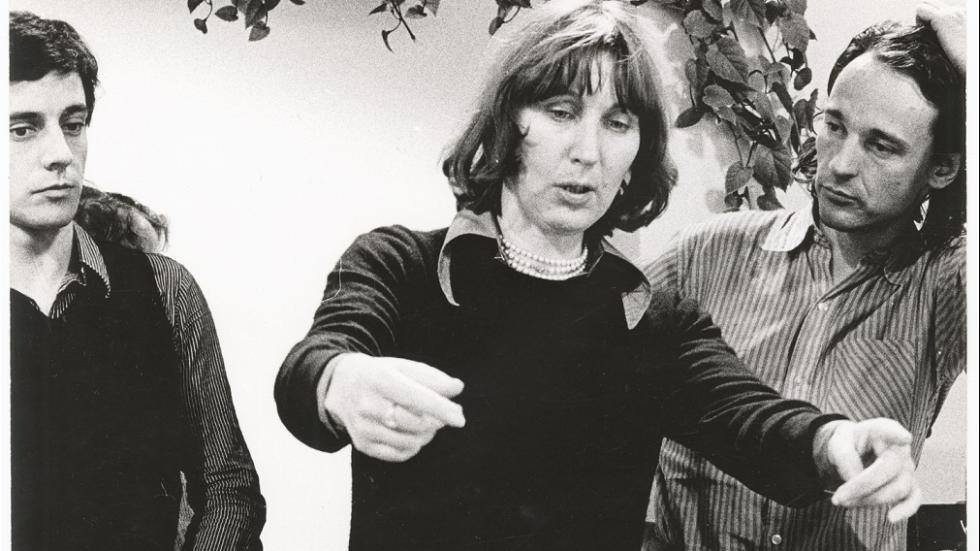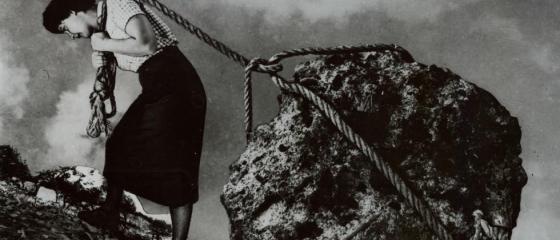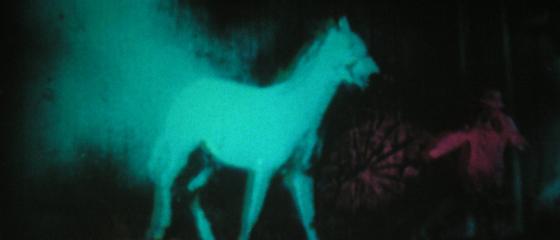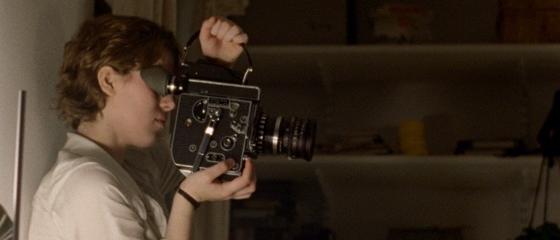In 1970, Kate Millet published her Sexual Politics: a bombshell that helped propel the feminist wave in the 70s, the explosion of a generalised feeling. A single emphatic phrase by Millet lays down the bases: “An objective examination of our sexual customs will prove that now, and throughout history, they constitute a clear example of a relationship of dominance and subordinance (…) A most ingenious form of “interior colonisation’ has been achieved, sturdier than any form of segregation. Even today when it is almost imperceptible, sexual dominion is perhaps the most pervasive ideology in our culture, and provides its most fundamental concept of power. This is so because our society, like all other historical civilisations, is a patriarchy.” The famous feminist slogan, ’the personal is political’ takes form and strength these days, coming up with a fundamental key for any self-respecting struggle. Meanwhile, in West Germany, Ula Stöckl had released in 1968 a film that anticipated and was in tune in various ways with all this, and with all that would come, and whose revolutionary aspect wasn’t only in its content but also in its forms. It is The Cat Has Nine Lives, a perfect union between the politics of the personal, on one hand, and the politics of the formal transposed to cinema, as was shown in the new cinemas of the 60s (with Godard as representative of its keenest side).
But The Cat Has Nine Lives is no more than one of the first steps on a long, militant road. A step that was preceded by others, shorter in duration, but of great importance in the maturing of a filmic personality. As Bärbel Freund and Thomas Mauch say in their introduction to the retrospective they organised recently in Arsenal of Stöckl’s work (an important step in the recognition of her figure), Stöckl (who had worked as a secretary in Germany, France and England between 1954 and 1963) in the early 60s…”knew that she wanted to work as a screenwriter. She applied to the Ulm School of Design and was the first woman to get into the Institute of Film Design. Alexander Kluge, who built up the film department with Edgar Reitz, asked her whether she could imagine taking full responsibility for her work as a filmmaker. He said that this was something completely new and that the idea was to pick up on the position of auteur from the early film era. Stockl made her first short in the fortress next to her school, using a silent 35mm Arri camera: Antigone (1964), a classic epic, is seven minutes long, with the plot reduced to sheer moments”.
The choice of Sophocles’ famous tragedy is key: Antigone is the woman who dared stand up to the laws of men (and to the tyranny of power). The starkness of Stöckl’s version, which alternates close-ups with shots of the bare landscape, in black and white, of daring compositions, and with the sound of the wind blowing in the background, points to a radicalness of clairvoyant forms. In that same period she also made a “miniature”, one of the exercises set out in the film school, which is almost a lesson in a feminist key of the famous “Kuleshov effect”: a group of women work hard at their tasks in the kitchen. They are the protagonists (in a glimmer of the protagonism of those tedious “feminine” tasks of which Chantal Akerman would give us a more than generous helping), interspersed with close ups of men eating, sitting in bars, indifferent, their faces given an almost tyrannical quality by the editing.

After other works where the emphasis is on woman’s experience (such as Sonnabend, 17 uhr (1966), a Saturday through the eyes of several girls), comes The Cat Has Nine Lives, considered “West Germany’s first feminist film” according to the critic Christa Maerker, a cult film that convenes five women at different stages in their problems with the patriarchy. Stöckl says: “I chose the characters as types: the not-yet-married professional woman, the recent divorcee confused about her future, the career woman, the deceived wife and the ultimate dream woman –a legendary Circe. In this film the women seem to be sleeping because each thinks only of herself and believes that she has an advantage over the other. Each one thinks she has a recipe for happiness, or that being unhappy is her own fault because she’s too dumb to be happy. In other words, these women cannot see their anxieties as having something to do with the society in which they live.”The film, with a fragmented, radically modern editing, carefully composed framings (in which the use of colour is key), alternates episodes with each of the characters: the underlying unease shouts of that intersection of the personal and the political through relationships and the dissatisfaction of all the characters.
Kristine Deloup, one of the women in The Cat Has Nine Lives, features in Stöckl’s next film, made with Edgar Reitz: Tales of the Dumpster Kid. It is an experiment in the form of a farce done in episodes, that toyed not only with the formal aspects of cinema but also with production and distribution models: totally punk on all sides. The central character, “the dumpster kid” is a girl in a red dress born from a placenta in a hospital rubbish bin, who has the most varied adventures: not only emulating the comic strips or vaudeville, but transgressing from the outset because of the intellectual and sexual approach of its very incorrect protagonist, a kind of Pippi Langstrum + Zazie (from the metro) after the sexual revolution, an outsider, in Reitz’s words (an amoral, or rather polymorphic, infantile, monstrous person)”. The 23 episodes, of varying duration and shot on 16mm, were shown in a bar in Hamburg, where those attending could choose from a “menu” which episodes they wanted to see. Our heroine dies and revives, she marries and unmarries, she goes to school, she masturbates with a field… A whole party from its conception to its exhibition, the project has a manifesto that starts like this: “Because in 1969 we had no desire to make another 90 minute film which would get no distribution. Because we came up with too many stories for a normal film. Because whilst shooting we don’t want to restrict ourselves to films of 2 minutes or 20 minutes. Therefore we make films between 2 and 20 minutes long. Because when you stop thinking about German distribution companies, the world becomes beautiful once again.”
With Reitz (and also Alf Brustellin and Nicos Perakis) she also undertook her next film, The Golden Thing, in which she again tackles a mythological theme: the story of Jason and the golden fleece, except that this time it is an 11 year old Jason who sets sail with Hercules, Castor, Pollux, Orpheus and other Greek gods of the same age, in search of the treasure. A decision that came after an in-depth study of the story in which they discovered that all the heroes in antiquity were children, who carried out their feats when only fifteen or sixteen years old. With a simplicity of elements that recalls other auteurist films that dealt with “period” stories through minimalism (inevitably Lancelot du Lac, by Bresson, or Los amours d’Astrée et de Céladon, by Rohmer, come to mind), this film tells the myth with freshness and a great playful sense. Each trial is overcome thanks to ingenuity, instead of strength, boldness or heroism (eminently patriarchal qualities), in a story in which the role of women is crucial: one of the best segments is that dedicated to the island of Lemnos, where only women live, and the character of Medea child also shines.
We pause here in the story of Ula Stöckl’s work to talk about the particularities of this very brief retrospective which we are dedicating to her, and which has a lot to do with visibility. The works filmed by Stöckl hereafter are not yet, unfortunately, easy to screen. Both The Cat Has Nine Lives and Tales of the Dumpster Kid have been restored recently, and The Golden Thing has a good distribution copy and a digitalization. Thanks to the generous collaboration of Bärbel Freund we could trace three more films with prints that could be projected, and from what Stöckl herself says, some of her works are in the process of being restored. All this gives cause for thought: on how the visibility of cinema depends on its availability, on how in the unstable, fragile, changing world of auteurist and experimental cinema there are people (and money) who appreciate the works, preserve them and make it possible for them to circulate, and of how all those factors contribute to the unjust disappearance of names and works from the history of cinema. In the case of Stöckl, it is hard to understand that her name and her work are relatively hidden even from those of us who work at this.
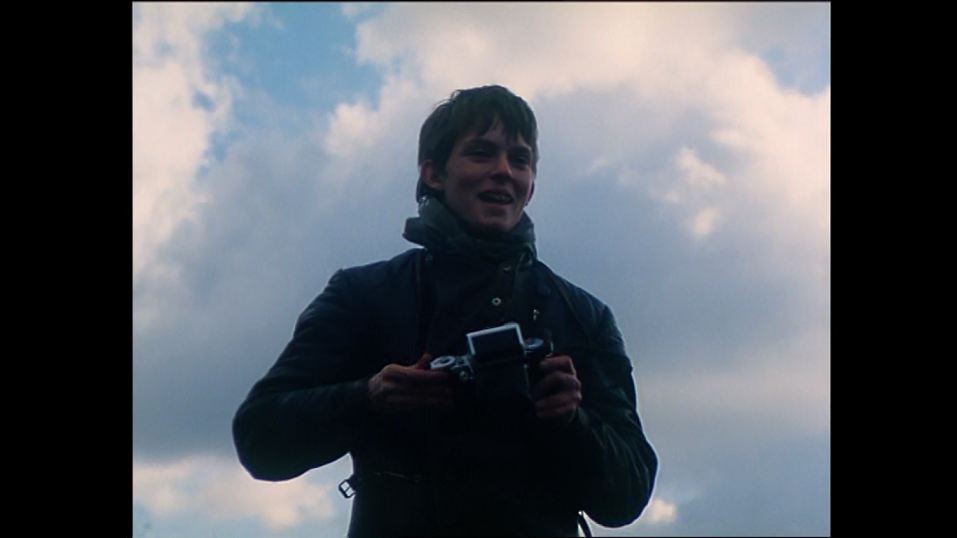
Let’s continue with the other titles we will be able to screen (stressing how rare and special this occasion is). We jump to 1984 with The Sleep of Reason. Stöckl returns to the myths, this time through a character called Dea (abbreviation of Medea), in a film that shows through three different generations the intellectual and emotional inquisitiveness of various women. On the occasion the tone is more intimist, more adult, with the schematism of black and white, in a more psychological approach if you wish of what Millet describes in Sexual Politics. Little wonder that Stöckl herself says: “’The private is political’ provides a key to the art of film, with which I can highlight power structures right into the most intimate of relationships”. And in this case, Dea’s relationship with her husband (who leaves her for a younger woman) reveals in its nuances an invisible yoke from which she can’t break free, despite her independence and activism (she’s fight a powerful drug company). Her mother is a woman who only recognises an authority and a reason for being in a man and in the saints to whom she prays, and her daughters, apparently liberated, also live under the tyranny of the media. The film takes place mainly in interiors, especially in Dea’s apartment, in which the handling of framing (in many cases placing the air behind the characters) and the camera movements and the lighting (almost always as backlight or in little strips) are essential in order to talk about how claustrophobic their internal repressions are. “Relationships between women decay as long as their lives are governed by a man” (as Pike Biermann points out), a man in all his ideal forms, as a reason for living, as the ultimate destiny, that distances women from themselves. These sequences are interspersed with Dea’s revealing dreams, striking, beautiful images that speak of her deepest angst.
We make another jump, this time to 1992. The two projects that follow now not only talk about the political in the personal, but also look at the historical and the collective on a return journey. The fall of the Berlin Wall is at the heart of both The Old Song and Don’t Talk About Fate, a feature and a short film respectively, intended to be projected together. The reunification of Germany (and the remains of that colossal failure) is shown through two sides of that coin: on the one hand, in the nostalgic, turbulent story of the family separated after the Second World War and, on the other, in the ways of behaving of the young people who grew up on different sides of the Wall in divided Germany. With an ironic and heartrending interpretation of “the old song”, Germany’s anthem (which glosses the supposed greatness of the nation), on its journey from Hamburg to Dresden the film looks at the complexities of reunification without giving easy answers (in a film that is uncomfortable for Germans from both East and West), through a series of highly allegorical female characters. Multiple viewpoints and interpretations of the past and of the world are contemplated here, with a glimmer of hope in the meeting at a distance of the girl from the East (who takes black and white photos) and the one from the West (who films rapid video sequences) who frame each other and smile. Grischa Huber plays Ilse (who was handed over to the authorities by her sister during the war), a kind of ghost from the past who moves through the film and whose voice we hear singing the anthem, and Stöckl features in the short film Don’t Talk About Fate. A symbolic figure who in the short film walks by the ruins of the Wall, reciting passages from Hyperion by Hölderlin selected by the actress, which question German identity in a piece intimately linked to The Old Song.
The personal is political, the political is personal. Forms matter, and you can’t talk about the desired new world with the forms of the old one. Ula Stöckl’s cinema tells us all that in its explosive creativity, freshness and intelligence.



